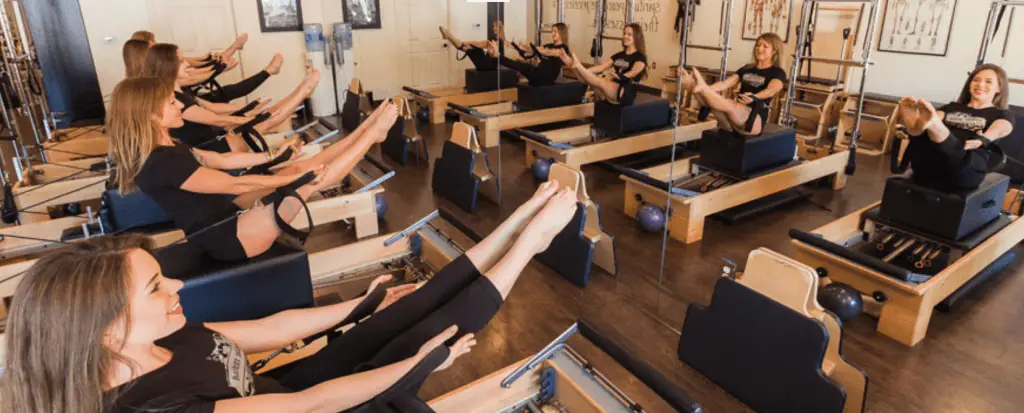Industry Insider

Teaching with a theme within a Pilates instructional field
The Pilates teaching field has emerged over the past century and has encouraged instructors to find a means of presenting material designed by Joseph Pilates. There are valued standards of presentation, some adhering meticulously to a specified regime and others using the prescribed formula that evolves from individual needs. Finding the means to describe and teach this information reinforces the common goal of finding essential tools of communication; this is the objective that unites the Pilates teaching field. One of these tools is to use a theme throughout the class to reinforce one or more ideas and communicate effectively to the Pilates student.
With this in mind the work becomes enhanced, which is then implemented through the class plan. For example, while fundamentally exploring the explanation and use of pelvic floor muscles at the beginning of a Mat session, the theme plays throughout the cueing and correctional modalities. The class progresses as it should, the exercises unfold, but each exercise has a gentle reminder of the early minutes of class. Is the pelvic floor being engaged? Does the class remember how they found these muscles? Can they recall the physical sensation found in that first breath fundamental and how can it be applied now that the progression has advanced to Roll Down or Climb a Tree?
Reminders continue as the instructor uses a variety of models to reproduce the idea again with new images applied to the same concept. Perhaps anatomical information is given describing the placement of the pelvic floor inside the body, “it lies between the pubic bone and tail bone” or “it is in the shape of a figure eight”. Perhaps visual images continue with “imagine the pelvic floor as a cylinder lifting up the entire length of the body”. Or asking questions such as: “is there engagement of the pelvic floor before beginning that Roll Down”? Always a gentle return to the theme, so that by the end of the class the student’s ability to remember that one important concept has been locked successfully into thinking about this muscle group.
Once the class is well under way, take the theme and put a different spin so as to appeal to the deeper mentality of the work. Thus, the instructor enhances perception and provides further insight into the body. This is like using the eyes inside the body and referencing the mind’s ability to find further awareness. How might one deepen their understanding of a certain concept so that they can “perceive”, through their senses, the understanding behind the movement? “Where is the sensation”? “What can one observe internally”? “How can knowledge about the pelvic floor impact deeper abdominals and bring greater attentiveness to the work”? Being aware of these shifts in the physical as well as the mental process brings greater appreciation to the idea of perception behind the specificity as well as the whole picture of the repertory.
By connecting intellect to physical, there is an element that serves as the “electrical conductor”. It is the ownership where body and thinking connect, often provided by the instructor who, with reminding words, provides an opportunity for clients to reinvest a central idea into the work.
The range of themes is endless. The extent to which a topic is explored depends on the instructor and the client as well as the client’s goals set up in the initial sessions. How many classes will it take to determine whether a single person or a mat class of twenty is grasping a specific idea? When does the teacher determine it is time to move on and take the subject matter being emphasized to a higher level of movement or thought? Having a conceptual strategy in the form of a theme enriches the chances for better communication and provides a pathway to achieving the instructor’s vision for the student. (It may be important to emphasize that planning and forethought is crucial to the presentation of a successful theme). Use the theme in one class, and then refer to it again in the following sessions while developing comparable steps. For example, the pelvic floor and its purpose is now embedded, at least in theory if not solid practice, and now the transverse abdominus is in discussion. How do the two sets of muscles provide a network of support together and how are they used throughout class. At what point does engagement ensure the potential for solid, progressive work in the body? How do the obliques enter the picture while engaging in torso stability? (Though this theme centers on use of anatomy, remember that the same topic can be presented with words that do not involve muscle names).
Move on when the idea has been planted in the mind and the body shows signs of success, such as movement patterns taking on hints of clarity. Refer back when necessary and then explore options of themes in the classes that follow. Use the language that has been provided through training and personal practice to find these themes. Use insights that have affected one’s own progress or words of teachers who have played a significant role in classes taken over the years. This intelligent, high impact form of body and mind movement has an infinite vocabulary that cannot be exhausted in one lifetime. One word can impact an entire series of classes, providing a theme that will enrich the teaching practice, transforming it into a giving practice.
Imagine the composition of a class when addressing the meaning of centering, or using the effect of breathing, or the definition of a precise moment. What could be done when the goal is to find control brought about by a sense of concentration and connection? Finally, the instructor builds into a felt sense of flow and rhythm throughout the class.
The possibilities are endless.




